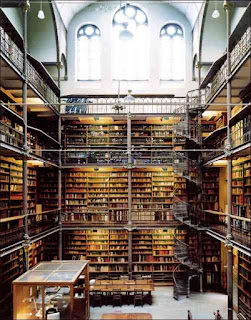 To date, Lorcan Dempsey's Libraries and the Long Tail has offered the most insightful analysis of the Long Tail's importance in libraries. As I've written before, the Long Tail is an effective strategy to utilize when implementing Library 2.0 for the modern library. The question is: could it be implemented without a huge overhaul of most existing libraries? These are some points that Dempsey argues:
To date, Lorcan Dempsey's Libraries and the Long Tail has offered the most insightful analysis of the Long Tail's importance in libraries. As I've written before, the Long Tail is an effective strategy to utilize when implementing Library 2.0 for the modern library. The question is: could it be implemented without a huge overhaul of most existing libraries? These are some points that Dempsey argues:(1) Transaction Costs - The better connected libraries are, the lower the transaction costs
(2) Data about choice and behavious - Transactional behavioural data is used to adapt and improve systems. Examples of such data are holdings data, circulation and ILL data, and database usage data.
(3) Inventory - As more materials are available electronically, we will see more interest in managing the print collection in a less costly way. Although historical library models have been based on physical distribution of materials, resources are decreasingly needed to be distributed in advance of need; they can be held in consolidated stores
(4) Navigation - There are better ways to exploit large bibliographic resources. Ranking, recommendations, and relation help connect users to relevant material and also help connect the more heavily used materials to potentially useful, but less used, materials
(5) Aggregation of Demand - The library resource is fragmented. In the new network environment, this fragmentation reduces gravitational pull, which means that resources are prospected by the persistent or knowledgeable user, but they may not be reached by others to whom the resources are potentially useful. What OCLC is doing is making metadata about those books available to the major search engines and routing users back to library services












